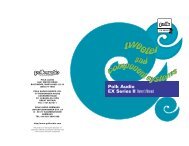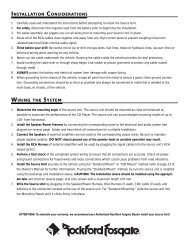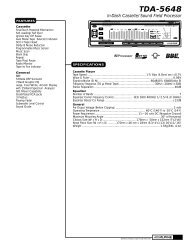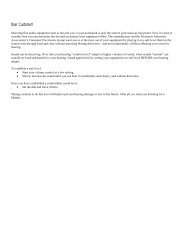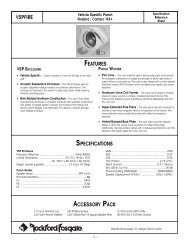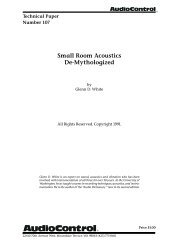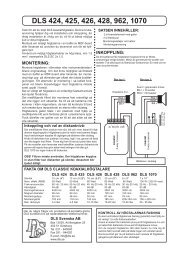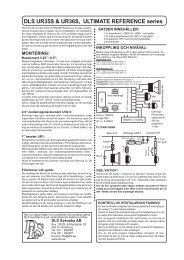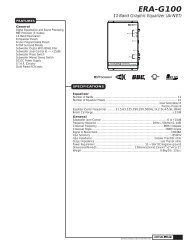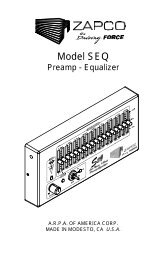Series 1 2030, 2060x and 4060x Amplifier Manual
Series 1 2030, 2060x and 4060x Amplifier Manual
Series 1 2030, 2060x and 4060x Amplifier Manual
You also want an ePaper? Increase the reach of your titles
YUMPU automatically turns print PDFs into web optimized ePapers that Google loves.
A 4 ohm speaker may experience a drop in impedance 4-<br />
6 times lower than its nominal (printed) impedance. A<br />
speaker will also cause phase shifts in the signal that is<br />
passed through it. These phase shifts happen because a<br />
speaker is an inductor (voice coil), a capacitor (compliance<br />
of the surround/spider), as well as a resistor (voice<br />
coil wire).<br />
To simulate a speaker the Audio Graph PowerCube<br />
measures output power into 20 different loads. It tests at<br />
8 ohms, 4 ohms, 2 ohms <strong>and</strong> 1 ohm. Each of these<br />
impedances is also tested at -60°, -30°, 0°, +30° <strong>and</strong> +60°<br />
phase angles, These different impedances <strong>and</strong> phase<br />
angles represent the shifts in impedance <strong>and</strong> phase that<br />
can occur in a typical loudspeaker.<br />
Information Cube<br />
The data acquired in the testing procedure is then graphed<br />
in the form of a 3-dimensional cube, hence the name<br />
PowerCube.<br />
The Phase Angle is expressed on the horizontal axis, the<br />
Output Voltage is presented on the vertical axis <strong>and</strong> the<br />
Impedance is displayed on the Z axis. Output Power, in<br />
watts, is listed on the left h<strong>and</strong> side for each impedance at<br />
1 each phase angle.




